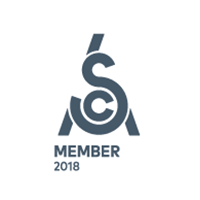 An interview with Bill Kennedy of the San Franciscan Roaster Co.
An interview with Bill Kennedy of the San Franciscan Roaster Co.
Q. Why is it so important to use US steel for the drums in your coffee roasters?
Bill Kennedy: So American made steel, the ore is mined here in the United States. It's refined and then it's milled here in the US.
The large steel mills here all have international standards, ISO standards that the American companies are extremely good at following, making sure that there's no corruption or other types of shortcuts that happen.
They maintain the highest of quality across the board. The steel is completely homogenous of the same type throughout.
There are real problems with foreign steel. First, they will blend all types of substances in just to increase the volume of the steel and that greatly reduces the strength of the steel. The other thing is that a lot of the steel is recycled.
We've all seen the videos of the ships beaching themselves on the shore of some sea and then all these workers coming out with their torches to cut the ship into pieces for recycling.
That's fine. It's just that when they mix all these different types of steel, you get different hardnesses, different carbon, and other alloys mixed together. It makes the steel very inconsistent.
If we don't have American steel, we see it in our machine shops. We'll be machining a piece of steel and then suddenly there'll be a really hard chunk and the machining bit will just shatter.
It's just difficult to machine. It's difficult to weld to keep it clean. We can make it look cosmetically wonderful. The steel, the actual molecular makeup and structure of the steel is not uniform.
The welders will see it too because they'll be welding along and it's like snap, crackle, pop, rice, crispies. It's just splattering and sputtering and everything because of the impurities in the steel.
Variances in the steel like that will act as an interference for even heat diffusion. The steel milled in the United States though is completely uniform and allows for very even heat diffusion.
You really, really want even heat diffusion. Otherwise you're going to have hot spots, cooler spots. You're not going to have a consistent heat transfer from the steel to the coffee bean.
Q Why is the heat transfer on the drum so important, when many roasting machines just use hot air?
 Bill Kennedy: What a lot of manufacturers did, because of the steel problem, in my opinion, they just went to convection as the primary heat transfer source to the beans because air is a lot more controllable.
Bill Kennedy: What a lot of manufacturers did, because of the steel problem, in my opinion, they just went to convection as the primary heat transfer source to the beans because air is a lot more controllable.
You lose out when you don’t have conductive heat transfer.
You can air fry something or you can throw something on the barbecue. At the end of the day, you throw something on the barbecue grill. It's always going to be better.
You can get similar, closer results with the air fryer, but it's not going to match what you're going to get when an expert person can control the conductive heat transfer on that steak or whatever you're cooking.
It's the same with a high-end commercial coffee roasting machine that has a great balance between the conductive heat transfer and the convective heat transfer and the ability for the operator to change the ratio of the conduction versus the convection. Because at different stages of the roast, for example, at the beginning, you're going to want more of that conductive heat transfer. Again, not too much, because conductive heat transfer is a little bit more rapid.
If you can control that, you're going to get a heat diffusion and an effect on the bean, on that complex organic, that you're not going to be able to duplicate with strictly convective heat transfer.
What we bring to the table is the ability for the master roaster to pull out of a bean a whole lot more than just somebody with a strictly convective heat transfer methodology.
Again, that all goes back to manufacturers' decisions to try and to control how people roast coffees to best suit the manufacturer
There are a lot of people that didn't used to be convective heat transfer experts suddenly claiming that convective heat transfer is the cat's meow.
Especially on the machine that the manufacturer is paying them sponsorship money to, in my opinion, influence what's being said.
Every manufacturer, including me, were going to try and influence people to buy their equipment. I just try to be as objective, as honest and as transparent as possible.


